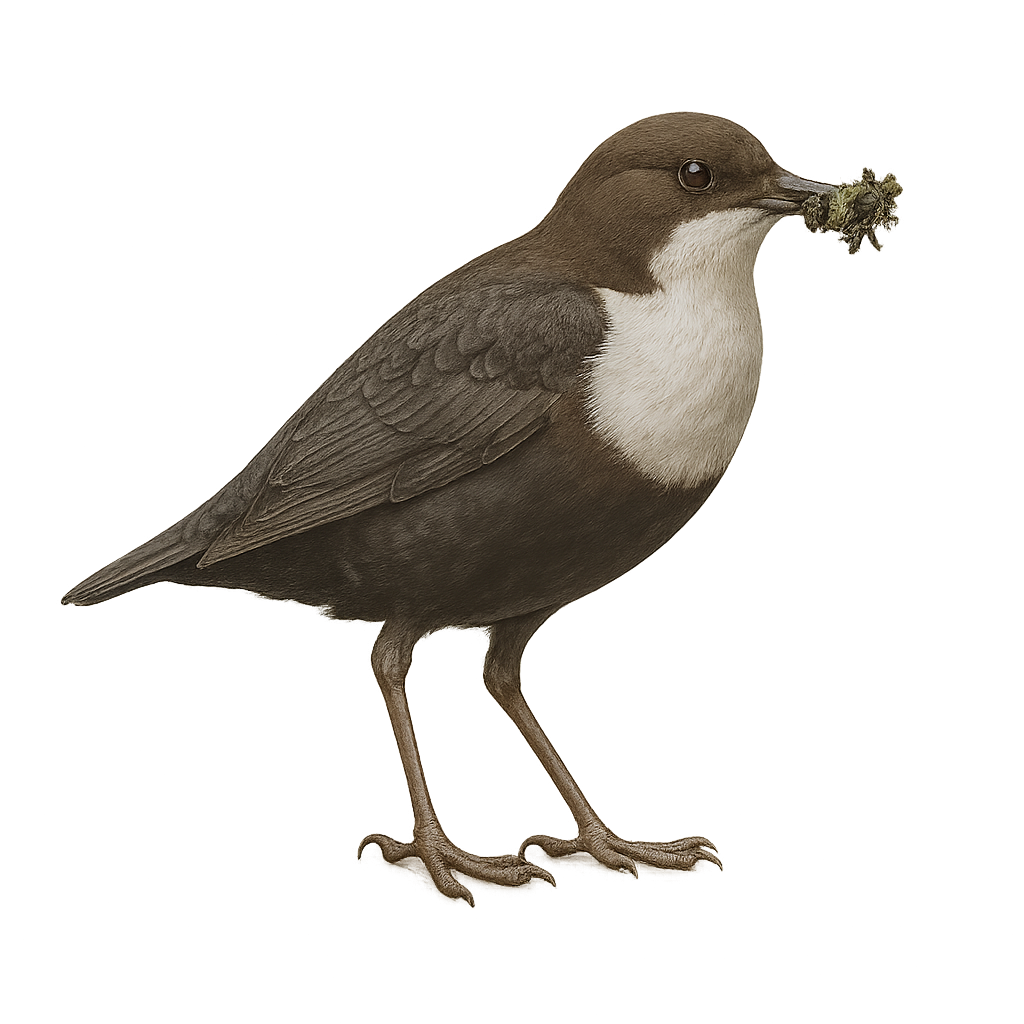Observe and photograph a species in its natural habitat
Learn where and when to observe a species in the wild, how to recognize it in the field, and what habitats it lives in. Get photography tips adapted to its behavior and capture stunning images without disturbing the animal. For full details, open the complete profile in the WildlifePhotographer app.
White-throated Dipper
Scientific name: Cinclus cinclus

IUCN Status: Least Concern
Family: CINCLIDAE
Group: Birds
Shyness: Suspicious
Safe distance: 20 m
Breeding season / Courtship: 01.12-31.12
Gestation: 14 à 18 jours
Births: 15.03-18.03
Habitat:
Rivers and rocky areas
Description:
The White-throated Dipper is a small aquatic bird, easily recognized by its dark plumage, compact body, and characteristic posture, often seen bobbing on rocks at the edge of streams. It has brownish plumage on its back and a white chest, with a short, powerful beak. This small bird is perfectly adapted to aquatic life, thanks to its webbed feet that allow it to swim and dive underwater in search of food.
The White-throated Dipper primarily feeds on aquatic insects, larvae, and small fish, which it captures by diving into rivers and streams. It is capable of swimming underwater and moving along the riverbed to search for prey. Although this bird is generally solitary, it can be observed in clear river or stream habitats, primarily in Europe and Asia. While it is generally not threatened, it can be impacted by water pollution and the disruption of its natural habitats.
Recommended lens:
>=400 mm
Photography tips:
Use a telephoto lens to capture images from a distance, respecting the discreet nature of the species.
Photograph at sunrise or sunset, when the soft light highlights the dipper’s plumage.
Look for it along fast-flowing rivers, especially in mountainous areas, where it feeds on aquatic insects and small invertebrates.
Be patient and discreet to avoid disturbing its natural behavior.
The White-throated Dipper is classified as Least Concern by the IUCN. It is essential to respect its natural habitat and minimize human disturbance.
Ready to take action?
Choose your platform and start your free trial today



